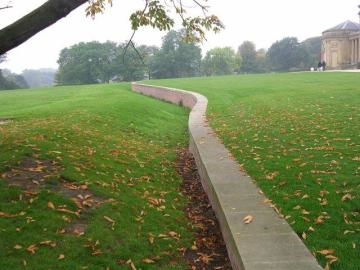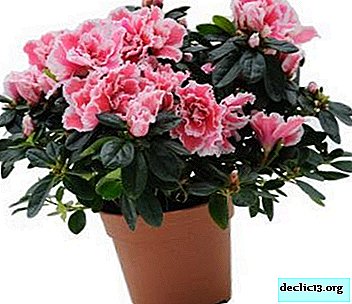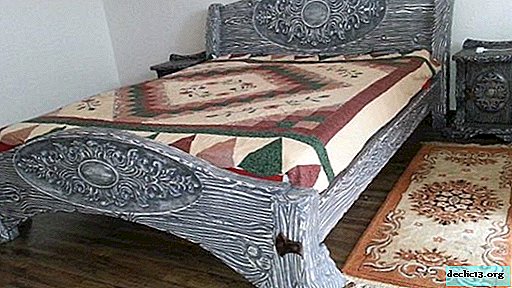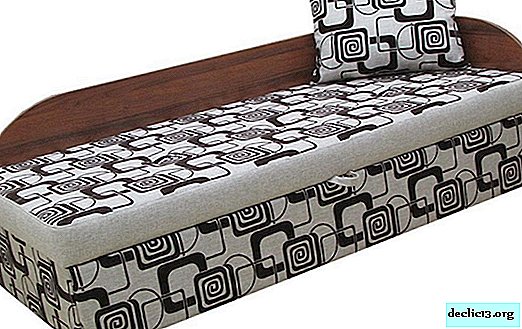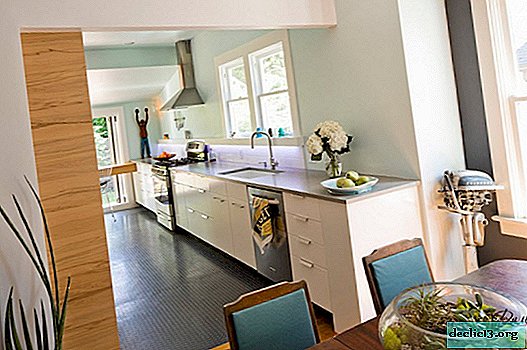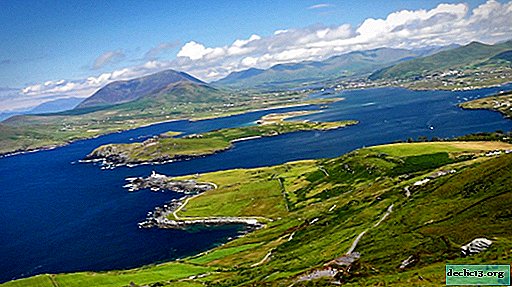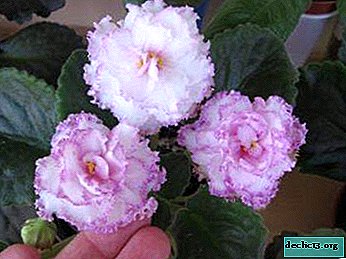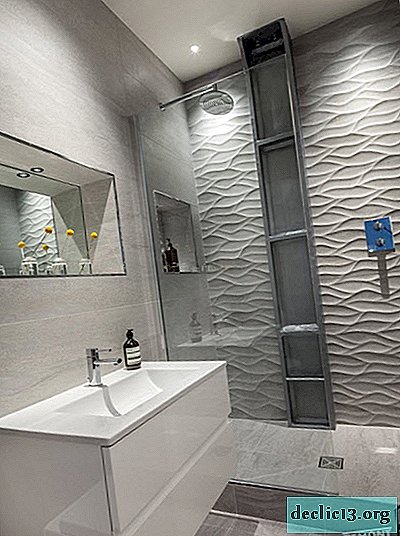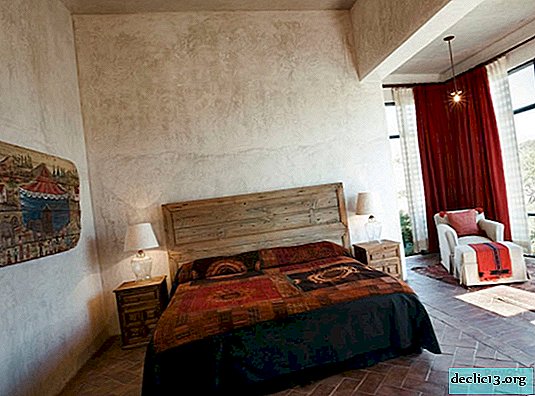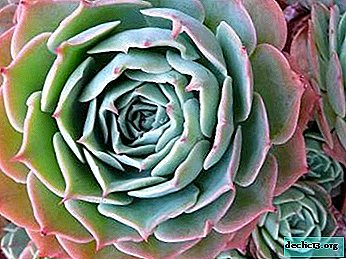Hohensalzburg Castle - walk around the medieval fortress
The Hohensalzburg Fortress, located in the Austrian Salzburg, is one of not only the largest, but also the best preserved castles of Central Europe. That is why lovers of medieval history like to visit here.
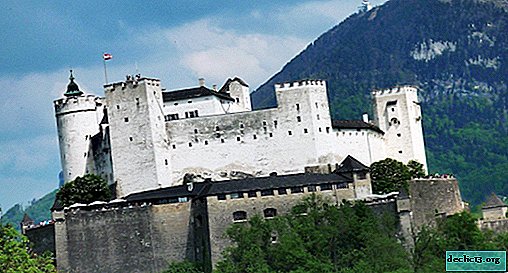
Brief historical background
The history of Hohensalzburg began in the 11th century. Then, back in 1077, a small castle was built on the top of Mount Mönchsberg, which became the residence of Archbishop Hebhard I. During its existence, it was strengthened and rebuilt several times, gradually turning into a powerful fortress and a reliable stronghold of the ruling clergy. However, its current size, occupying almost 30 thousand square meters. m., the construction acquired only by the end of the 15th century.

Like all old buildings, Hohensalzburg Castle is literally saturated with myths and legends. Among them is the legend of the Salzburg bull, which saved the inhabitants of the fortress from the rebellious peasants. In order to deceive the rebels, the then archbishop ordered daily repainting of the only ox left on the farm and taking it to grazing outside the gates of the besieged fortress. Having decided that there was still a lot of food in the castle and just did not give up, the peasants were forced to retreat.

So the Hohensalzburg fortress in Salzburg became one of the few military installations in Austria, which was never taken by attack. The only exception was the Napoleonic Wars, during which the castle was surrendered without a fight. However, at that time he had already lost his status and was used as warehouses and barracks. Nowadays Hohensalzburg is on the list of Austria's most popular tourist destinations, attracting visitors from all over the world.
What to see on the territory?
Hohensalzburg Castle is famous not only for its exquisite interior and unique medieval atmosphere, but also for its many attractions located on its territory. Let's get acquainted with some of them.
Entrance installationsA tour of the surroundings can begin with a plan of the Hohensalzburg fortress and smaller models installed at the entrance. They not only demonstrate the grandeur and grandeur of this structure, but also allow you to at least approximately understand what lies ahead.
 Museums
MuseumsThe next point of the program will be a visit to local museums - there are three in the fortress:

- Museum of the Rainer Regiment - founded in 1924 in honor of the Imperial Infantry Regiment, which at one time was located within the walls of the fortress;
- The Fortress Museum - contains samples dedicated not only to the history of Hohensalzburg, but also to the daily life of its inhabitants. The exhibition presents the remains of ancient walls, weapons, Roman coins, instruments of torture, a medieval heating system, the first telephone exchange and even a fully equipped kitchen;
- Puppet Museum - here you can see exhibits brought from the world famous Salzburg Puppet Theater located on the Schwarzstrasse.

The Golden Chamber is considered the most beautiful and expensive building of the fortress. Gilded carvings, magnificent wall paintings, a four-meter fireplace, rich ornaments - all this testifies to the good taste of the owners of Hohensalzburg and exceptional attention to detail.
Historians claim that at one time, the Golden Chamber served as a waiting room for visitors awaiting reception from the archbishop. This is indicated by numerous benches, decorated with carved vines and images of wild animals. The main highlight of this room is the Keutschacher oven, made of glazed colored ceramics. This product really deserves your attention! Firstly, it is rather unusual for its time, and secondly, all the tiles used for facing the stove are absolutely unique, because each of them tells its own story.
Read also: Mirabell Park and Castle is one of Austria's main attractions.
Hassengraben Bastion
Another attraction of the Hohensalzburg castle in Austria is the remains of a massive bastion, erected during the reconstruction of 1618-1648 by order of the Archbishop of Paris von Lodron. In those days, the fortress was one of the main firing points involved in the Thirty Years War. Nowadays, on the site of the former bastion, picturesque gardens extend.
Right behind Hassengraben you can see the Rekturm watchtower, erected in 1500, a round bell tower, poured 35 years before, and a medieval curtain wall.
Railway funicularThe funicular responsible for the delivery of tourists to the mountain is no less interesting. Its age is more than 500 years, so this structure can be called one of the oldest freight elevators in Europe. The length of the former cable car, which became the prototype of the present funicular, is 180 m. Once it was served by horses driven by prisoners. Now it is a modern vehicle moving at a fairly high speed.
 Tanks
TanksThe huge tanks built in 1525 can be called the most important event in the history of the fortress. The fact is that the mountain on which Hohensalzburg stands is almost entirely composed of solid dolomite rocks. It was almost impossible to cut through them, if not a well, then at least a small spring. To rectify the situation, the then Archbishop Matthew Lang von Wellenburg ordered the construction of special tanks that collected rainwater and made it suitable for consumption. The best architects of Veneto worked on the creation of cisterns. The result of their work was a complex structure consisting of gutters, underground wooden pipes and a stone pool filled with clean gravel.
Salt storageAnother interesting place of the Hohensalzburg castle in Salzburg is the former salt storeroom. In the 11th century, salt was the main symbol of power, wealth and omnipotence. It is through the extraction and sale of this spice that the owners of the fortress got the opportunity not only to expand its territory, but also to buy expensive interior items.

The main characteristic feature of this building is the roof, made in the shape of a butterfly and designed to protect the rest of the premises from fire. Now in the former pantry you can see portraits of the clergy who made the greatest contribution to the development of the castle.
Princely chambersIn its luxury and beauty, the bishop’s chambers are not inferior to the Golden Chamber. All the furniture in the bedroom was upholstered with expensive fabrics and precious stones, and the walls were covered with protective panels, the upper part of which was decorated with gold buttons. Near the bedchamber are a toilet, representing a hole cut in a wooden frame, and a bathroom.

How to get there
The castle is located at: Moenchsberg 34, Salzburg 5020, Austria. You can get to it from the city center on foot or by the FestungsBahn funicular, which can be found at Festungsgasse, 4 (Festung Square, 4). Having bought a ticket, you get an automatic right to visit the main attraction of Salzburg.

Working hours

The Hohensalzburg Fortress in Salzburg is open to visitors all year round, including on holidays. Opening hours depend on the time of year:
- January - April: from 9.30 to 17.00;
- May - September: from 9.00 to 19.00;
- October - December: from 9.30 to 17.00;
- Weekends and Easter: from 9.30 to 18.00.
Important! On December 24 of each year, the castle closes at 14.00!
On a note: How to get to Salzburg from the capital of Austria.Find out RATES or book any accommodation using this form
Ticket price
There are several types of tickets to enter the territory of the fortress.
| Title | What does it include? | Cost | |
|---|---|---|---|
| "All inclusive" | Ascent and descent on the funicular; Excursion with an audio guide; Visiting the Princely Chamber, the Museum of the Rainer Regiment, the Puppet Museum, exhibitions and the Magic Theater. | Adult - 16.30 €; Children (from 6 to 14 years old) - 9.30 €; Family - 36,20 €. | |
| All Inclusive Online Ticket | All the same, but for 13,20 € | ||
| Basic Ticket | Ascent and descent on the funicular; Excursion with an audio guide; Visits to museums and exhibitions. | Adult - 12.90 €; Children (from 6 to 14 years old) - 7.40 €; Family - € 28.60. | |
Important! You can check the current information on the official website of the Hohensalzburg Fortress in Salzburg: www.salzburg-burgen.at/en/hohensalzburg-castle.
Useful Tips
Having decided to get acquainted with the beauties of the Hohensalzburg castle, take a note of a few useful recommendations:

- You can clarify information about the start of excursions in the information center located at the entrance;
- They also give out audio guides, small appliances, making a walk around the castle even more interesting. Among many languages there is Russian;
- Unnecessary things are best left in the storage room;
- By purchasing tickets online on the official website, you can save up to 3.10 € on each standard type;
- Another additional discount can be obtained by arriving at the fortress before 10 in the morning;
- An early visit to Hohensalzburg has another important advantage - in the morning there are fewer people;
- In the main castle of Salzburg there really is something to see, so it is better to take tickets to the interior immediately;
- The largest influx of tourists is observed in July and August. At this time, incredibly long lines stand at the box office;
- To use the services of a professional guide, gather a group of 10 people. Another prerequisite is prior agreement;
- Sometimes a professional photographer works in the castle. At the end of the day, you can find your photo on the tables at the exit and redeem it literally for a couple of euros.

The Hohensalzburg Fortress impresses with its scale, an interesting history and a rich excursion program. Be sure to check here while strolling through the streets of Salzburg and exploring local attractions. This visit will remain in your memory for many years.


